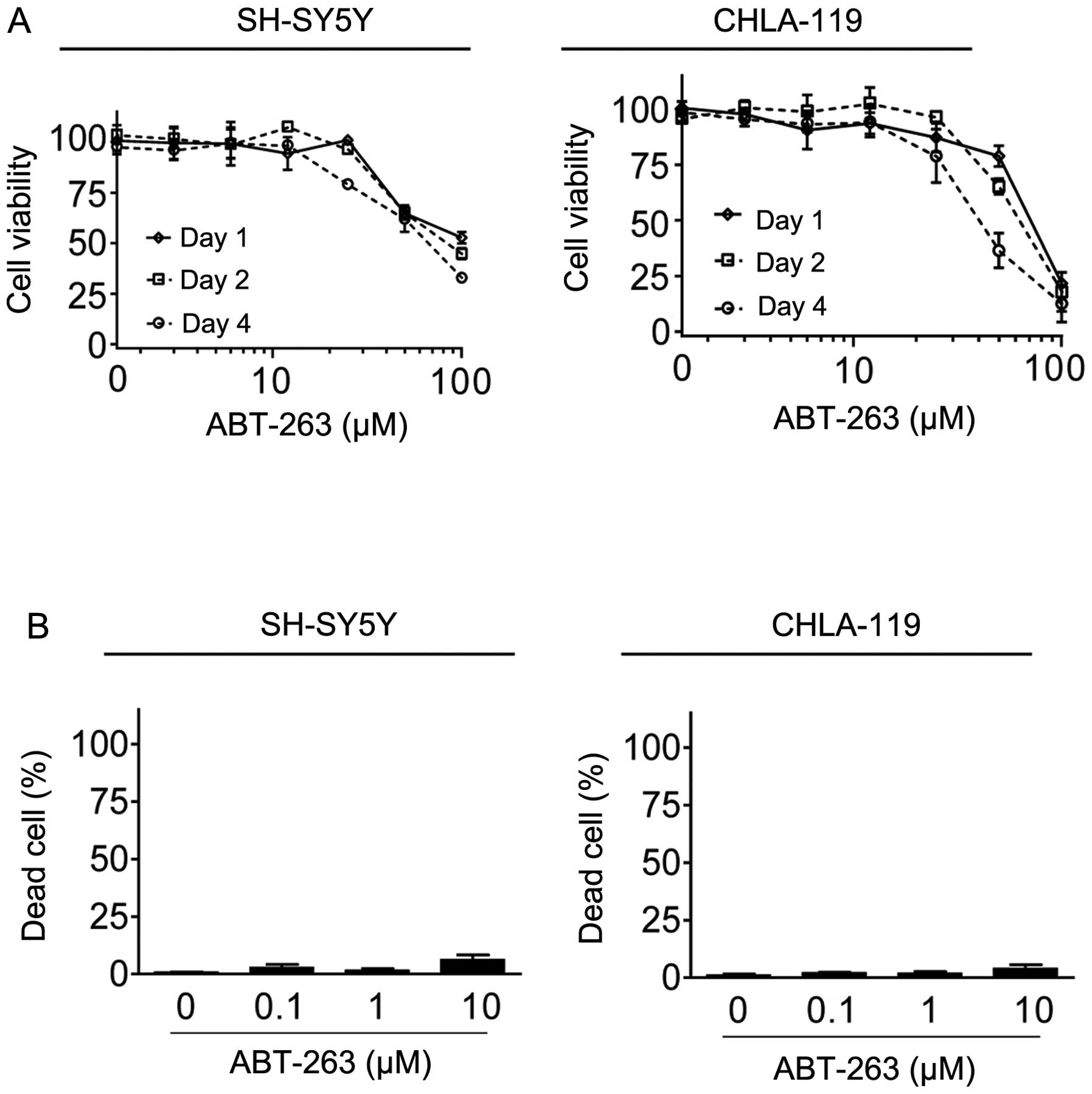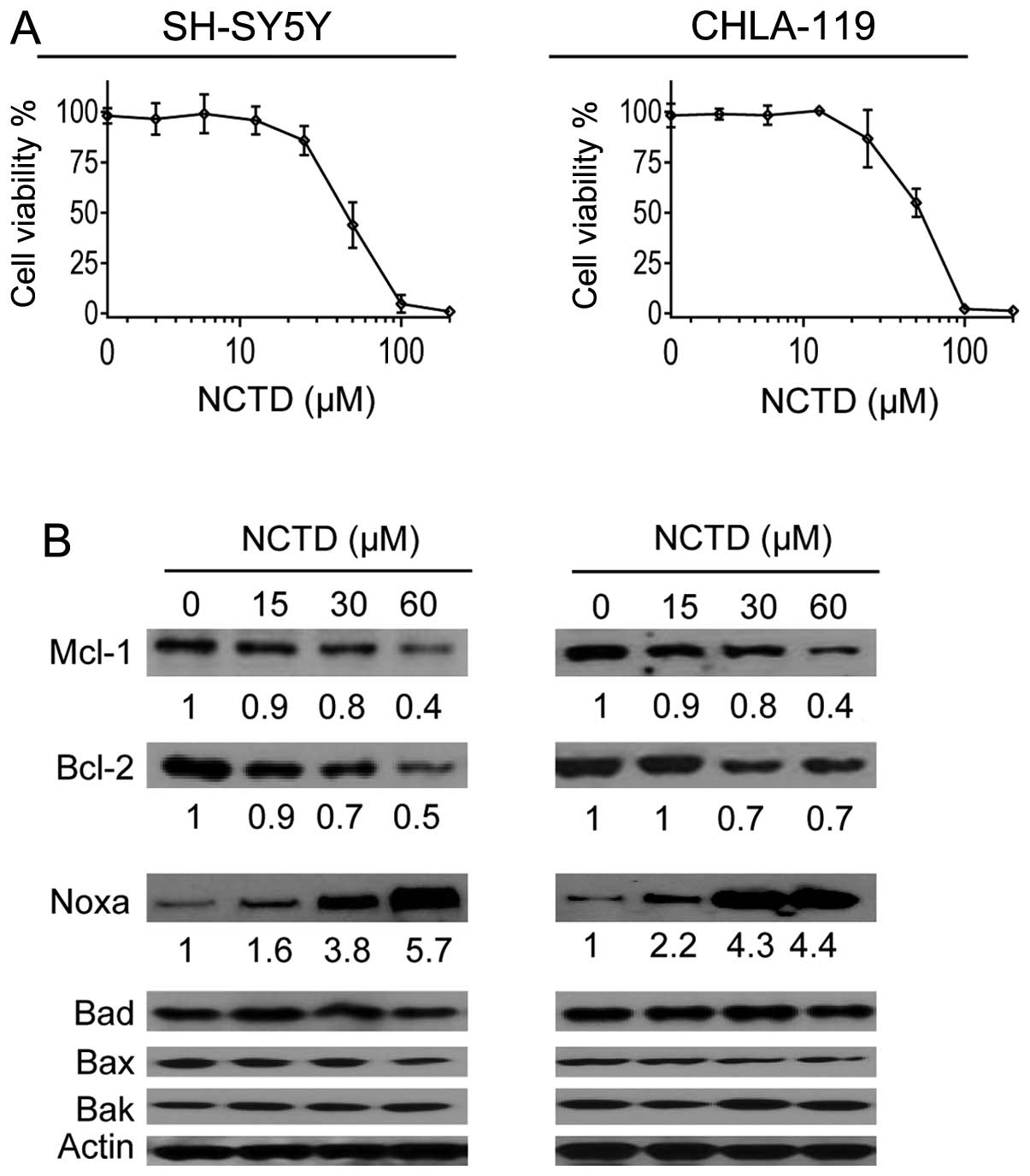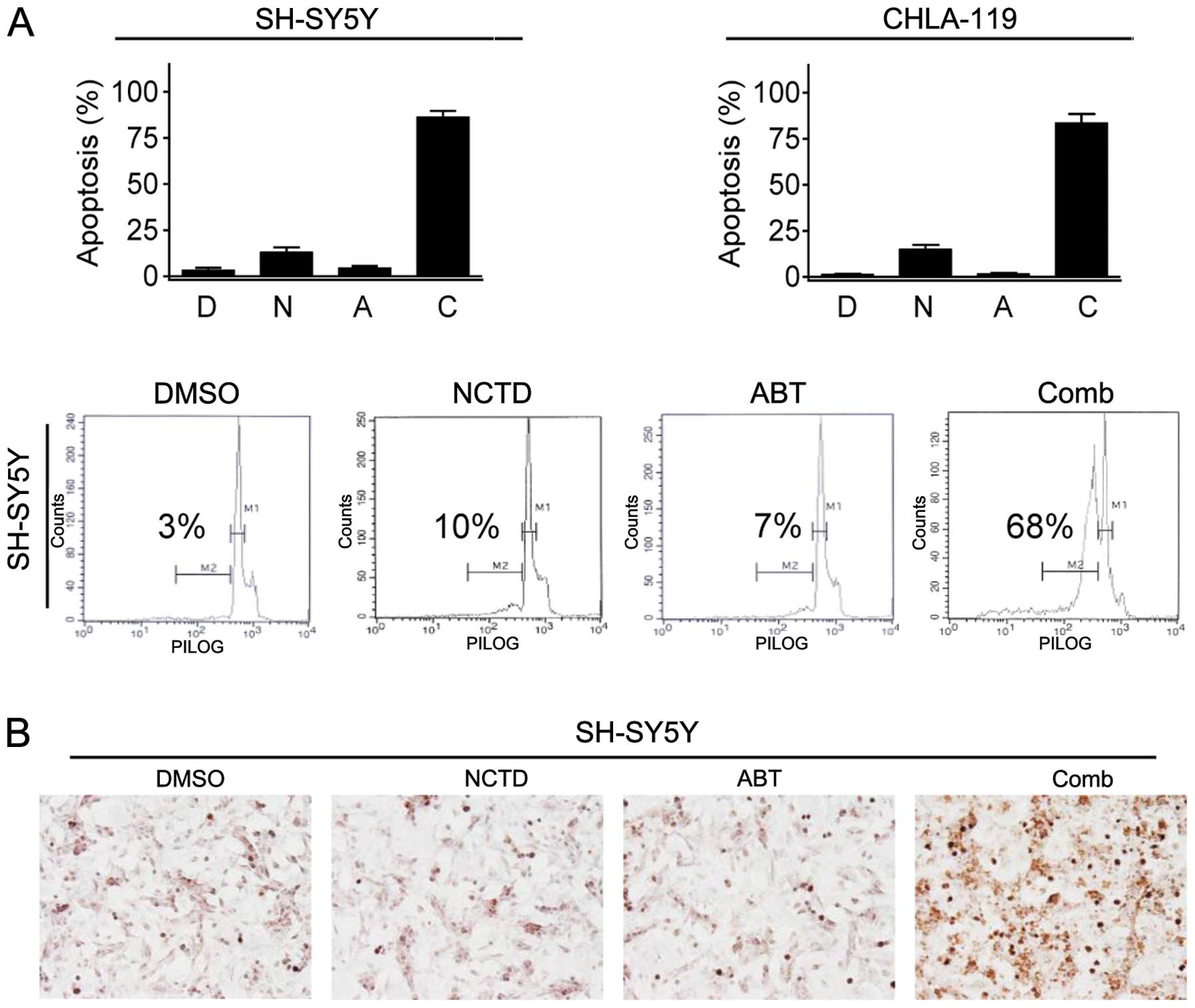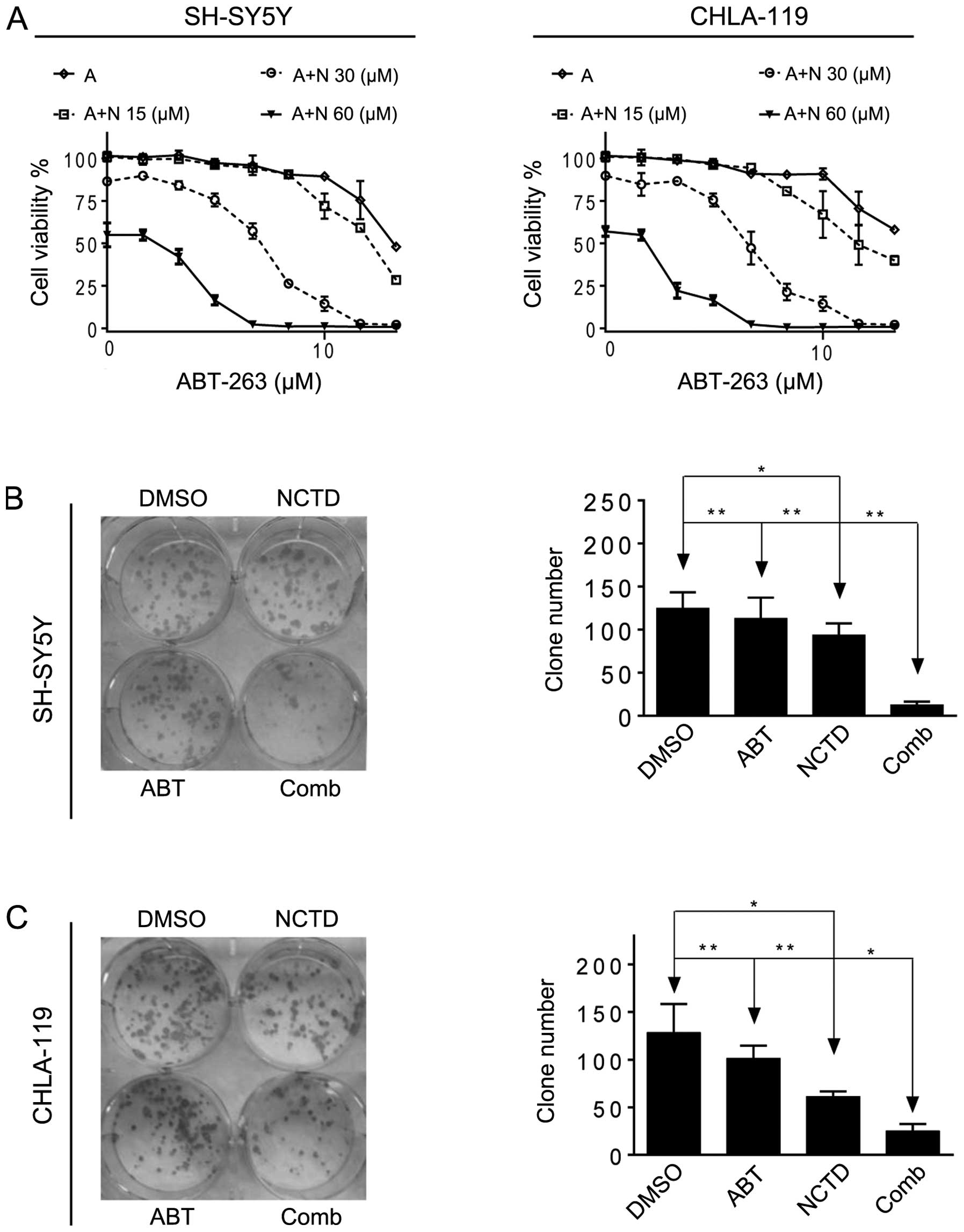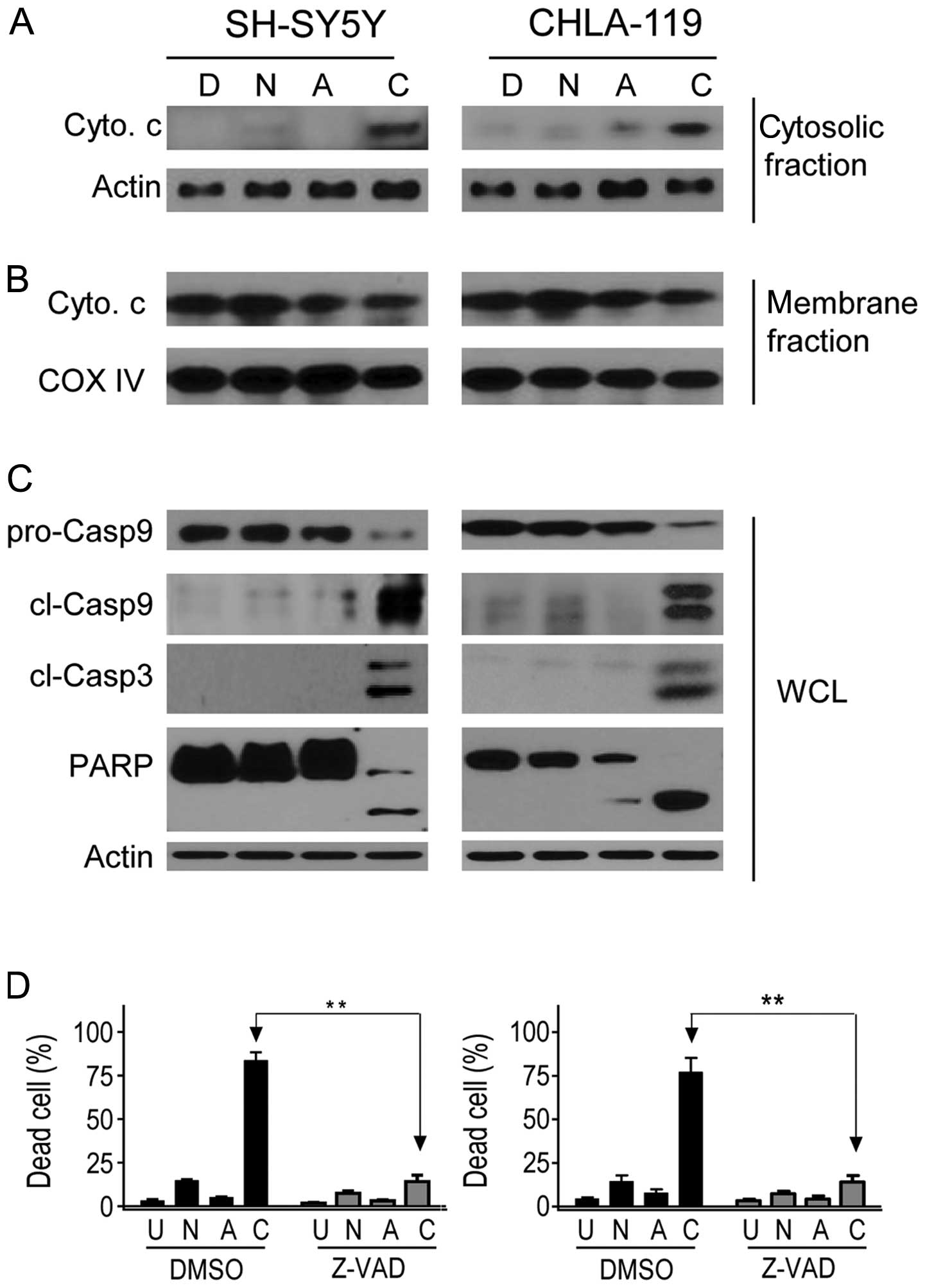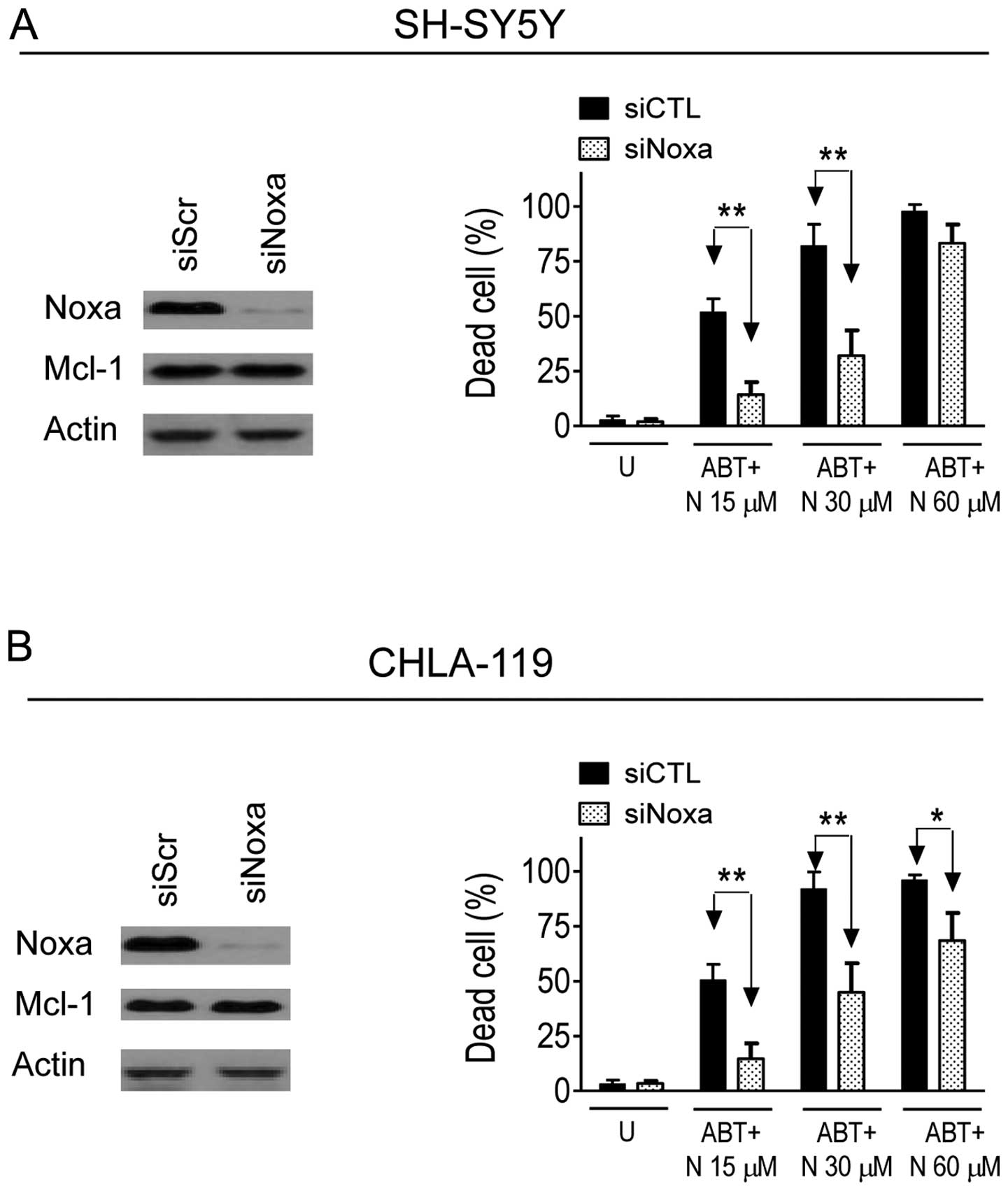|
1
|
Meadows A, Baum E, Fossati-Bellani F, et
al: Second malignant neoplasms in children: an update from the late
effects study group. J Clin Oncol. 3:532–538. 1985.PubMed/NCBI
|
|
2
|
Welch C, Chen Y and Stallings R:
MicroRNA-34a functions as a potential tumor suppressor by inducing
apoptosis in neuroblastoma cells. Oncogene. 26:5017–5022. 2007.
View Article : Google Scholar : PubMed/NCBI
|
|
3
|
George R, Sanda T, Hanna M, et al:
Activating mutations in ALK provide a therapeutic target in
neuroblastoma. Nature. 455:975–978. 2008. View Article : Google Scholar : PubMed/NCBI
|
|
4
|
Goldsmith K, Lestini B, Gross M, et al:
BH3 response profiles from neuroblastoma mitochondria predict
activity of small molecule Bcl-2 family antagonists. Cell Death
Differ. 17:872–882. 2010. View Article : Google Scholar : PubMed/NCBI
|
|
5
|
Kroemer G: The proto-oncogene Bcl-2 and
its role in regulating apoptosis. Nature Med. 3:614–620. 1997.
View Article : Google Scholar : PubMed/NCBI
|
|
6
|
Fang H, Harned T, Kalous O, Maldonado V,
DeClerck Y and Reynolds C: Synergistic activity of fenretinide and
the Bcl-2 family protein inhibitor ABT-737 against human
neuroblastoma. Clin Cancer Res. 17:7093–7104. 2011. View Article : Google Scholar : PubMed/NCBI
|
|
7
|
Castle V, Heidelberger K, Bromberg J, Ou
X, Dole M and Nuñez G: Expression of the apoptosis-suppressing
protein bcl-2, in neuroblastoma is associated with unfavorable
histology and N-myc amplification. Am J Pathol. 143:1543–1550.
1993.PubMed/NCBI
|
|
8
|
Dole M, Nuñez G, Merchant A, Maybaum J,
Rode C, Bloch C and Castle V: Bcl-2 inhibits chemotherapy-induced
apoptosis in neuroblastoma. Cancer Res. 54:3253–3259.
1994.PubMed/NCBI
|
|
9
|
Hanada M, Krajewski S, Tanaka S, et al:
Regulation of Bcl-2 oncoprotein levels with differentiation of
human neuroblastoma cells. Cancer Res. 53:4978–4986.
1993.PubMed/NCBI
|
|
10
|
Tse C, Shoemaker A, Adickes J, et al:
ABT-263: a potent and orally bioavailable Bcl-2 family inhibitor.
Cancer Res. 68:3421–3428. 2008. View Article : Google Scholar : PubMed/NCBI
|
|
11
|
Oltersdorf T, Elmore S, Shoemaker A, et
al: An inhibitor of Bcl-2 family proteins induces regression of
solid tumours. Nature. 435:677–681. 2005. View Article : Google Scholar : PubMed/NCBI
|
|
12
|
Gandhi L, Camidge D, Ribeiro de Oliveira
M, et al: Phase I study of Navitoclax (ABT-263), a novel Bcl-2
family inhibitor, in patients with small-cell lung cancer and other
solid tumors. J Clin Oncol. 29:909–916. 2011. View Article : Google Scholar : PubMed/NCBI
|
|
13
|
Rudin C, Hann C, Garon E, et al: Phase II
study of single-agent navitoclax (ABT-263) and biomarker correlates
in patients with relapsed small cell lung cancer. Clin Cancer Res.
18:3163–3169. 2012. View Article : Google Scholar : PubMed/NCBI
|
|
14
|
Konopleva M, Contractor R, Tsao T, et al:
Mechanisms of apoptosis sensitivity and resistance to the BH3
mimetic ABT-737 in acute myeloid leukemia. Cancer Cell. 10:375–388.
2006. View Article : Google Scholar : PubMed/NCBI
|
|
15
|
Billard C: BH3 mimetics: status of the
field and new developments. Mol Cancer Ther. 12:1691–1700. 2013.
View Article : Google Scholar : PubMed/NCBI
|
|
16
|
Goldsmith K, Gross M, Peirce S, et al:
Mitochondrial Bcl-2 family dynamics define therapy response and
resistance in neuroblastoma. Cancer Res. 72:2565–2577. 2012.
View Article : Google Scholar : PubMed/NCBI
|
|
17
|
Klymenko T, Brandenburg M, Morrow C, Dive
C and Makin G: The novel Bcl-2 inhibitor ABT-737 is more effective
in hypoxia and is able to reverse hypoxia-induced drug resistance
in neuroblastoma cells. Mol Cancer Ther. 10:2373–2383. 2011.
View Article : Google Scholar : PubMed/NCBI
|
|
18
|
Wang G: Medical uses of mylabris in
ancient China and recent studies. J Ethnopharmacol. 26:147–162.
1989. View Article : Google Scholar : PubMed/NCBI
|
|
19
|
Yang E, Tang W, Zhang K, Cheng L and Mack
PO: Norcantharidin inhibits growth of human HepG2 cell-transplanted
tumor in nude mice and prolongs host survival. Cancer Lett.
117:93–98. 1997. View Article : Google Scholar : PubMed/NCBI
|
|
20
|
Kok SH, Cheng SJ, Hong CY, et al:
Norcantharidin-induced apoptosis in oral cancer cells is associated
with an increase of proapoptotic to antiapoptotic protein ratio.
Cancer Lett. 217:43–52. 2005. View Article : Google Scholar : PubMed/NCBI
|
|
21
|
Zhang S, Li G, Ma X, et al: Norcantharidin
enhances ABT-737-induced apoptosis in hepatocellular carcinoma
cells by transcriptional repression of Mcl-1. Cell Signal.
24:1803–1809. 2012. View Article : Google Scholar : PubMed/NCBI
|
|
22
|
Huang Y, Liu Q, Liu K, Yagasaki K and
Zhang G: Suppression of growth of highly-metastatic human breast
cancer cells by norcantharidin and its mechanisms of action.
Cytotechnology. 59:201–208. 2009. View Article : Google Scholar
|
|
23
|
Yang J, Liu X, Bhalla K, et al: Prevention
of apoptosis by Bcl-2: release of cytochrome c from mitochondria
blocked. Science. 275:1129–1132. 1997. View Article : Google Scholar : PubMed/NCBI
|
|
24
|
Green DR and Kroemer G: The
pathophysiology of mitochondrial cell death. Science. 305:626–629.
2004. View Article : Google Scholar : PubMed/NCBI
|
|
25
|
Mazumder S, Choudhary G, Al-Harbi S and
Almasan A: Mcl-1 phosphorylation defines ABT-737 resistance that
can be overcome by increased NOXA expression in leukemic B cells.
Cancer Res. 72:3069–3079. 2012. View Article : Google Scholar : PubMed/NCBI
|
|
26
|
Okumura K, Huang S and Sinicrope F:
Induction of Noxa sensitizes human colorectal cancer cells
expressing Mcl-1 to the small-molecule Bcl-2/Bcl-xL inhibitor,
ABT-737. Clin Cancer Res. 14:8132–8142. 2008. View Article : Google Scholar : PubMed/NCBI
|
|
27
|
Simonin K, N’Diaye M, Lheureux S, et al:
Platinum compounds sensitize ovarian carcinoma cells to ABT-737 by
modulation of the Mcl-1/Noxa axis. Apoptosis. 18:492–508. 2013.
View Article : Google Scholar : PubMed/NCBI
|
|
28
|
Zinn R, Gardner E, Dobromilskaya I, et al:
Combination treatment with ABT-737 and chloroquine in preclinical
models of small cell lung cancer. Mol Cancer. 12:Mar 2–2013.
View Article : Google Scholar
|
|
29
|
Yang PY, Chen MF, Kao YH, et al:
Norcantharidin induces apoptosis of breast cancer cells:
involvement of activities of mitogen activated protein kinases and
signal transducers and activators of transcription. Toxicol In
Vitro. 25:699–707. 2011. View Article : Google Scholar : PubMed/NCBI
|















